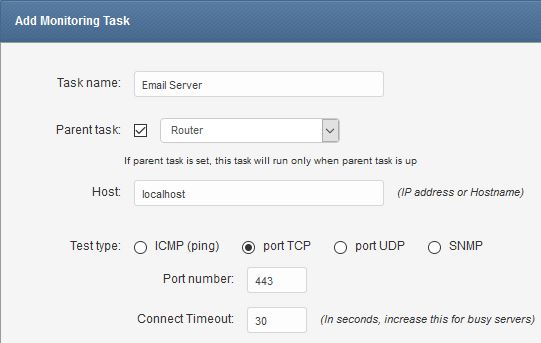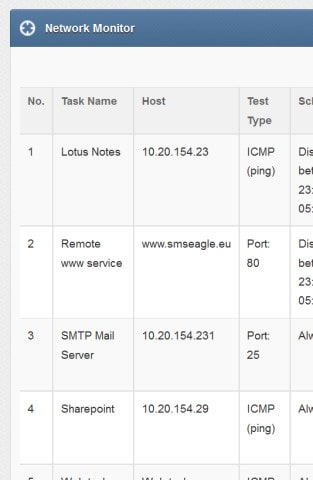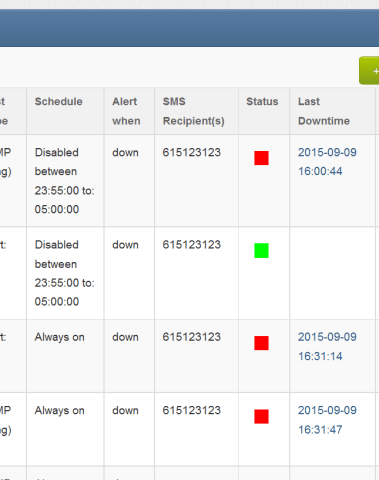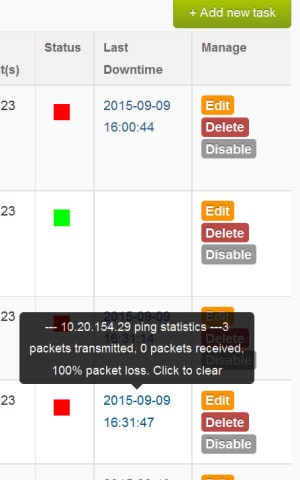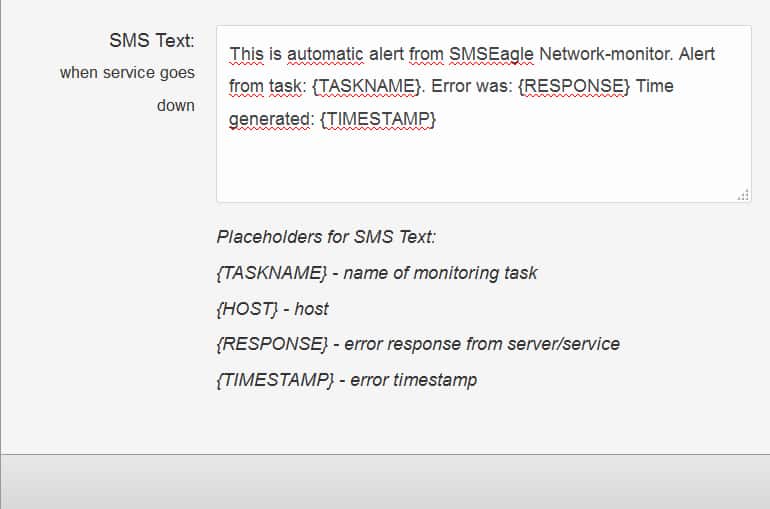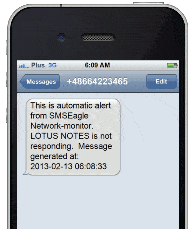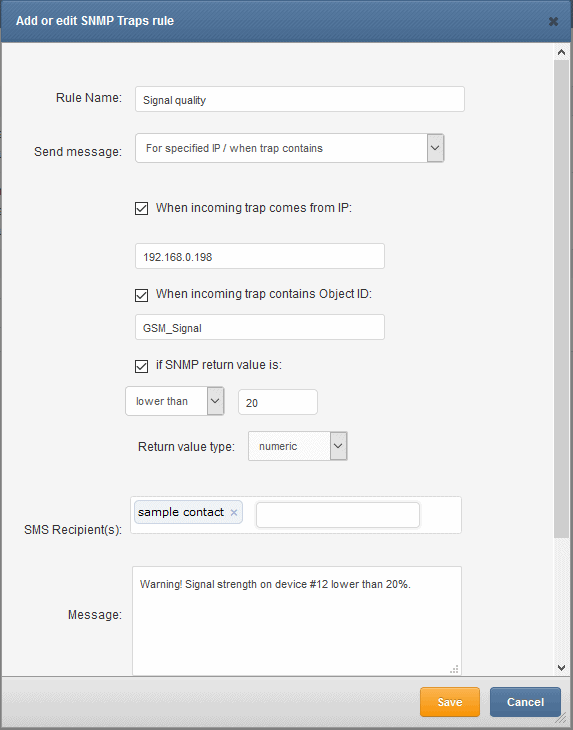Network monitoring
Do you care for sustainability of your services? Of course you do!
With SMSEagle we give you a tool for monitoring your services or servers. Just define what and when should be monitored. SMSEagle will send you SMS alerts when your services/servers go down. Be informed immediately, keep reaction time low, and let your customers be happy with your services.
Read how it works…

